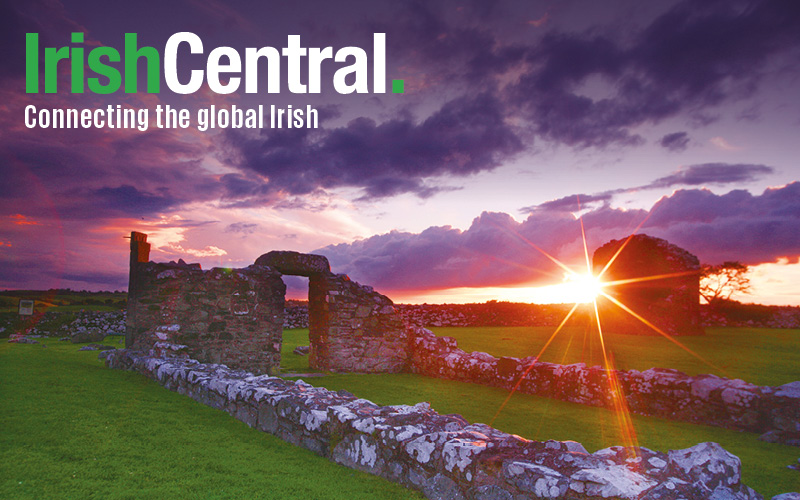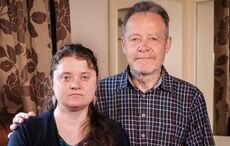In 2008, Celtic Woman’s album The Greatest Journey Essential Collection debuted at number one on Billboard’s World Music chart. Three of their albums combined have held the number one position for ninety consecutive weeks. Now, having sold over 50 million records worldwide, the multi-platinum Irish darlings of PBS are releasing their fifth studio album on January 26th.
Celtic Woman seems to be an unstoppable force, but few knew that the group would see more than a night of success. Originally, Celtic Woman was set to perform a one-night show with members Chloë Agnew, Órla Fallon, Lisa Kelly, Méav Ní Mhaolchatha and Máiréad Nesbitt. None of these singers had worked together before or knew each other, but under the musical direction of David Downes, they performed to a sold-out audience for the first time in 2004 for PBS Television in Dublin.
Despite changes in the lineup since then (according to statements released by Celtic Woman, Ní Mhaolchatha and Fallon both left to pursue solo careers), the quintet has continued to captivate audiences, specifically American ones, up into the new decade.
The answer as to why American audiences have responded so enthusiastically to Celtic Woman has not always been clear. When I asked Lynn Hilary, who joined the group in 2007, why she thought American audiences continue to be so responsive to Celtic Woman, she admitted that at first, she wasn’t sure. “I didn’t really understand it for a long time, that they would react in such a way,” she said. “They’d be crying and on their feet every night applauding us. But American people really identify with Ireland, and a lot of Americans have Irish in their ancestry, so Celtic Woman allows them to re-identify with their roots and gives them a feeling of belonging.”
Alex Sharpe, who became a permanent member in 2009 for the Isle of Hope tour, added, “I think without America, to be honest, Celtic Woman would not be the success that they are. It was only supposed to be a one-night special, but Americans have taken us into their hearts and really embraced Celtic Woman.”
It’s no secret that America has had a long-standing relationship with Ireland, politically, culturally, and of course musically. With the Irish diaspora in America at about 45 million people, there is a secure space for a crossover group like Celtic Woman to thrive. Perhaps no one knows this better than David Downes, the creator of Celtic Woman and former musical director of Riverdance.
Building upon the massive success of Riverdance in the U.S., Downes decided to return to Celtic-influenced music and dance but this time in the format of an all-female lineup, similar to that of pop groups like Girls Aloud and the Spice Girls. The structure, however, is where the similarities end – the members of Celtic Woman are trained in everything from classical to theatrical to traditional Irish singing, with formally trained Máiréad Nesbitt on fiddle.
Máiréad, Lynn, and Lisa had stints on Michael Flatley’s dance shows, Riverdance and Lord of the Dance, while Alex Sharpe began her career playing Dorothy in The Wizard of Oz at Olympia Theatre in Dublin. Chloë Agnew, the youngest member at 20 years old, got her big break when she recorded a single with David Downes shortly after 9/11 to help American and Afghanistani children and raised over 20,000 pounds.
When they aren’t touring or making promotional appearances, the women of Celtic Woman spend time with their families and often work on other interests. Chloë, for instance, completed high school “with flying colors” in the early years of Celtic Woman and is now taking an online college course in child psychology. Lisa, who had her third child, Ellie, in 2008, balances life on tour with family time. “A lot of hard work goes into the balance of it, but I’m very lucky because I have a huge support group [her children] with me on the road.” She humbly added, “But it’s no harder than balancing any other career with three children, it’s just that I have to do it in a hotel room and on a bus. They enjoy it and that’s the main thing. They’re learning and seeing places they might never see again.”
Lynn Hilary released a solo album in 2008 called Take Me With You and Máiréad Nesbitt is currently working on her second solo album.
With lives as full and varied as these, it’s hard to see how five women with different personalities come together to make such harmonious music. The members have resounding praise for David Downes in this respect, who controls the look, sound, and production of Celtic Woman in a way that is extremely polished but allows the musicians’ individuality to come through. “Each of the girls are an entity in themselves and I think that’s what makes it personal for an audience,” said Alex. “The fans have built up a relationship with these girls and they have their own favorites.”
Each member’s singing voice and style is very different, allowing her to put her unique stamp on songs. Despite the predetermined structure, Lynn said that they can’t help but eventually show their personalities a little on stage.
“I know with Máiréad from the beginning she’s always had her style…she has to move with her music and she uses the whole stage. So that’s her being very individual and unique, showing her energy and passion for the music.” Chloë “sparkles…she’s a bubbly person in real life and very funny as well, and she’s smiling the whole time [on stage] because she loves it.” Lynn calls herself “the shy one,” something that she has embraced and that has made her more relaxed on stage.
The girls also have different musical influences – they mentioned everything from the Beach Boys and Michael Jackson to Sinéad O’Connor and Beyoncé – and different styles they enjoy performing, which is often reflected in the selections made by Downes for each album. This time around, the five women are backed up by their usual 6-piece Celtic Woman band and also by a veritable army of collaborators: a 12-member Aontas Choir, 27-piece film orchestra, 20-member Discovery Gospel Choir, 10-member Extreme Rhythm drummers and 11-piece bagpipe ensemble. The result is a beautiful, lush sound that ranges from a roar to a single voice, never losing pace.
Much of the album feels like a cohesive performance piece, the way the songs build and meld into one another.
While the album relies on the tried-and-true method of mixing covers of contemporary and classical songs with original pieces, the songs that beg to be listened to repeatedly are, unsurprisingly, the traditional Irish ones. “Nil S’én La,” which is famously performed by fellow Celtic crossover group Clannad, is reworked as an upbeat tune and given English lyrics that emphasize the song’s title (in English: “It is not day yet”) as a chance to continue celebration. A true testament to the group’s fusion of many musical styles, towards the end there is a funk-inspired bass-beat as the song continues to build in excitement to its halting end.
Also included is the hauntingly beautiful “My Lagan Love,” which has been covered by everyone from The Corrs to Kate Bush to Van Morrison. Here it is a solo sung by Lynn Hillary, who cites it as one of her favorite songs to perform, and includes a rich string accompaniment.
These songs and “Galway Bay,” another melancholy rumination on the dreamlike coastline of Ireland’s West, describe perfectly the romanticized view that many Americans have long held of Ireland and of Celtic culture. When I asked the women if they thought Celtic Woman fit into an American perception of Celtic Ireland, their answer was a qualified yes. Alex admits, “I guess there is a romantic side to the Celtic Woman image. It does have a very pure and quite a magical, spiritual feel to it. Ireland has been associated so much with its myths and legends…of course, being here, especially in [Dublin], you do have a different take on it, as you do anywhere in the world.”
Celtic acts like Celtic Woman and Riverdance may continue to be hugely popular for sentimental and nostalgic reasons, but what sets Celtic Woman apart is their acknowledgment and portrayal of the Irish-American connection through their performances. This is perhaps the most poignant message taken from their latest CD, Songs from the Heart, as well as the gratitude of Celtic Woman to their American fan base. Their last tour, the Isle of Hope tour, was named after the song “The New Ground – Isle of Hope, Isle of Tears” which appears on their latest album. Written by Brendan Graham, who also has penned the lyrics for “You Raise Me Up,” the song tells the story of the mass immigration to America by the Irish through the story of Annie Moore, the first girl to walk onto Ellis Island at only fifteen years old. The title and chorus refer not only to America and Ellis Island, an “isle of hope” for millions, but also of the home they left.
“During the Famine days a lot of Irish people immigrated to America looking for opportunities because Ireland was in such an awful state,” Lynn says. “But also they thought someday they might return home to Ireland, that Ireland might be habitable again.” The song ends with the speaker coming to America, imagining herself a successor to Annie Moore. The history of the Irish in America is a long and varied one, and “Isle of Hope, Isle of Tears” grasps some of that complexity.
“O, America!” too is a testament to the Irish-American connection and, more generally, a thanks to an enthusiastic American fan base. Composed by Graham and William Joseph, the song is a patriotic oath that in its simplicity reveals something about our shared history: the same hope for opportunity that has defined the American dream has also defined the Irish experience in America. The appeal of these songs and of Celtic Woman is that they represent something familiar but also something still worth dreaming about, a dream of home.
With a big year behind them (highlights included meeting President Obama at the tree-lighting ceremony in Washington, D.C. and an appearance on Dancing with the Stars) and a two-part U.S. tour ahead, the members of Celtic Woman are still awe-struck by their success five years later. When asked about the future of the group, Chloë said, “I’ve come nowhere close in my predictions to where we are today, so to be honest, I have no idea. It’s just blossomed, and just when you think it can’t get any better, it does.”




Comments